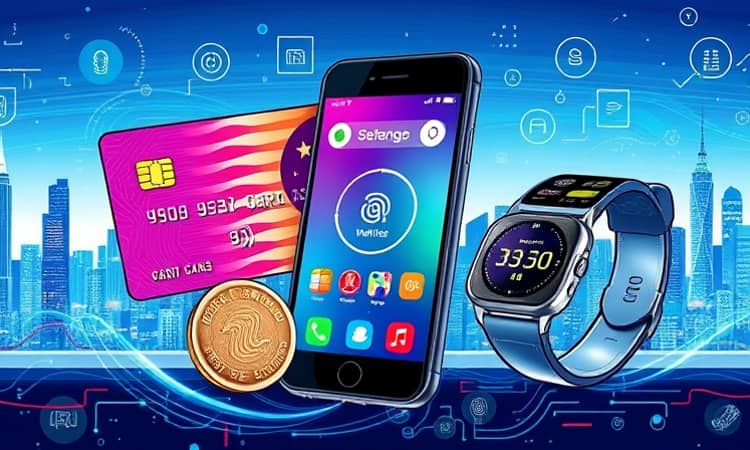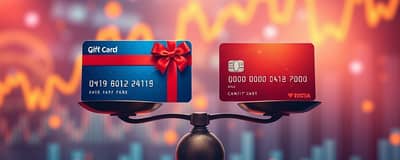As we stand at a crossroads in digital payment history, the way we use credit cards is undergoing a profound transformation. From the rapid rise of tap-to-pay transactions to biometric security and AI fraud defenses, 2025 promises unprecedented convenience and stronger security for consumers and merchants alike.
In this article, we explore emerging technologies, evolving consumer habits, and strategic industry shifts that will define the next generation of credit and payment solutions.
Contactless Payments & NFC: The New Norm
Contactless payments have moved from novelty to necessity. Fueled by consumer demand for speed and safety, NFC-enabled cards and devices are now the default option at checkout terminals worldwide.
First introduced in Seoul in 1995 and later popularized in the U.S. by Mobil’s Speedpass, this technology delivers fast, secure tap-to-pay transactions without swiping or inserting cards. Today, over three-quarters of in-person retail purchases globally leverage contactless interfaces, minimizing queues and maximizing hygienic interactions in a post-pandemic world.
Mobile Wallet Explosion & Device Integration
Mobile wallets such as Apple Pay, Google Pay, and Samsung Pay have surged in popularity, with nearly 240 million monthly active Apple Pay users and 21% of internet users tapping into Google Pay each month.
Wearable tech—including smartwatches, rings, and fitness bands—continues to blur the line between finance and fashion. By eliminating the need for physical cards, these devices offer seamless access to payments at a flick of the wrist, catering to on-the-go lifestyles and accelerating the shift to digital-first commerce.
Biometric Security: The Next Layer of Trust
As fraud schemes grow more sophisticated, financial institutions and technology providers are embedding biometric authentication directly into payment flows. Fingerprint scanners, facial recognition systems, and iris scans add a personalized layer of defense that static PINs and signatures cannot match.
Apple’s Face ID and Touch ID have set the standard for integrating biometrics with wallet apps, but the trend is spreading rapidly. Future payment terminals will routinely require a quick facial or fingerprint scan to unlock cards, making fraud more difficult and boosting consumer confidence in every transaction.
AI-Driven Fraud Detection: Smarter Protection
Artificial intelligence and machine learning are revolutionizing the way banks detect and prevent fraud. By continuously analyzing transaction patterns, AI flags anomalies in real time and initiates instant alerts or holds.
Compared to traditional rule-based systems, this approach delivers preventing fraud in real time with greater accuracy, reducing chargebacks and saving merchants millions each year. Beyond security, AI also powers personalized offers and seamless onboarding, enhancing the overall customer experience through tailored incentives and streamlined account setup.
Buy Now, Pay Later’s Impact and Limitations
Buy Now, Pay Later (BNPL) services have transformed consumer expectations around credit flexibility. Forecasts suggest BNPL could outpace some conventional card transactions by the end of 2025, particularly among younger cohorts.
- Pros: Instant credit approval, transparent installment plans, and zero-interest promotions.
- Cons: Only 17% of consumers currently prefer BNPL over traditional cards.
- Opportunity: Merchants offering BNPL can enjoy increased sales and customer engagement.
While BNPL provides a compelling alternative, credit cards maintain dominance thanks to their broader acceptance, generous reward structures, and well-established consumer protections.
The Rise of the Multi-Function Card (Flexible Credentials)
Imagine carrying a single card that can switch between credit, debit, prepaid, and even reward points. Visa’s Flexible Credential concept does exactly that.
- Toggled funding: Consumers can select payment source at checkout.
- Multi-currency support: Ideal for frequent travelers.
- Business versions: Simplified cash-flow management for small enterprises.
With three million accounts already active in Japan and adoption tests under way globally, this innovation could mark the end of wallet bloat and the beginning of truly versatile payment tools.
Blockchain & Cryptocurrency: Emerging Mainstream Forces
Blockchain’s decentralized ledger technology offers unparalleled security and transparency for transaction processing. Its adoption in contactless ecosystems enhances fraud resistance and trust.
Meanwhile, major networks and retailers are beginning to accept cryptocurrencies such as Bitcoin and Ethereum. This integration appeals to tech-savvy consumers and opens new avenues for cross-border payments, potentially cutting settlement times from days to seconds.
Loyalty & Rewards: Driving Consumer Choice
In an era of endless payment options, highly targeted loyalty programs can be the deciding factor for consumers. Today, 25% of shoppers rank reward points as their top incentive for online purchases.
Banks and issuers are partnering with e-commerce platforms, travel services, and retail brands to offer personalized deals at checkout. By embedding loyalty offers directly in payment apps, issuers boost engagement and foster long-term relationships with cardholders.
Empowering Small Businesses & Merchants
Tap-to-Phone solutions let merchants accept NFC payments directly on smartphones, removing the need for costly point-of-sale hardware. This innovation is empowering small businesses to digitize quickly and affordably.
- Lower startup costs: No specialized terminals required.
- Omnichannel integration: Seamless link between in-store and online sales.
- Faster checkout: Enhanced customer satisfaction and repeat visits.
As regulations evolve to support digital-first payments, SMEs gain access to advanced security features and simplified compliance, leveling the playing field against larger competitors.
Looking Ahead: Wildcards and Open Questions
What’s next for credit cards and payment systems? Will emerging biometric wearables redefine identity? Can AI fully eliminate fraud without hindering user flow? How will regulatory changes shape data privacy and cross-border payments?
One thing is certain: the convergence of contactless convenience, AI security, flexible credentials, and blockchain transparency will continue to reshape our financial landscape. Consumers and businesses that embrace these innovations will unlock new levels of efficiency, trust, and growth in the digital economy.














